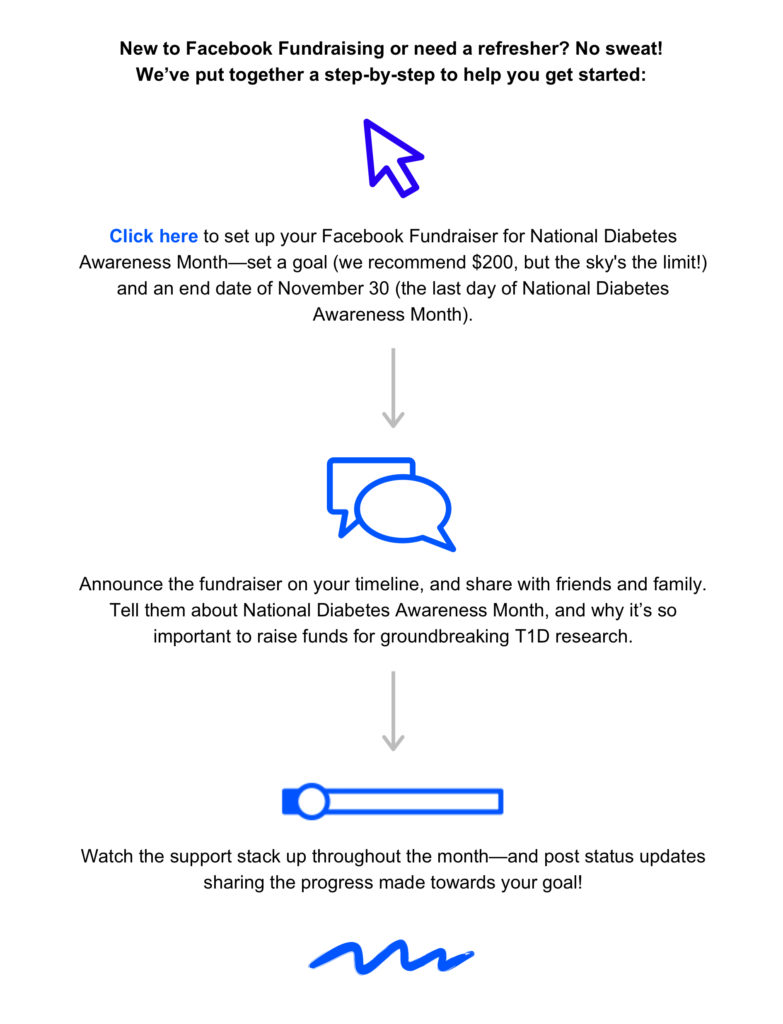Your 2019 end-of-year (EOY) plans are set: You know your ad spend, your email cadence, your match funds — and then someone asks, “What about Facebook Fundraisers?”
You’re not alone if you’re not quite sure how to proceed with Facebook Fundraisers. With tracking close to impossible, valuable donors can be lost in the algorithm, making testing the efficacy of a Facebook Fundraiser difficult. Year after year, email is the main driver of EOY fundraising, but some organizations are attributing more than 30% of their digital revenue to Facebook — so it’s worth taking a closer look!
Here are a couple of things to consider when deciding if Facebook Fundraisers are right for you:
1. Are you an organization with a mission-affected audience? When a person is impacted by a disease or health concern, their loved ones want to help. That is what gave rise to incredibly successful P2P (peer-to-peer) events — and Facebook Fundraisers are just a continuation of that people-led fundraising trend. Health nonprofits, like our clients JDRF, Muscular Dystrophy Association (MDA), and Susan G. Komen for the Cure, are among the organizations that have successfully leveraged Facebook Fundraisers for events, birthdays, and beyond.
2. How committed are your donors? When figuring out their EOY giving, most donors have a number of organizations and causes that they care about. The average donor gives to 4.5 charities, but very few will have more than one Facebook Fundraiser. Are you their top organization? If you have a strong volunteer corps or a dedicated and vocal set of monthly donors, you may be in luck!
You’ve gone through the checklist and decided that Facebook Fundraisers should be a part of your EOY fundraising strategy. We’ve got some ideas to help you kick things off!
1. Get the timing right. When does a supporter feel most invested in your organization? It’s often when current events intersect with your mission (like a natural disaster or popular news segment), when supporters connect their personal life to your mission (a diagnosis or anniversary), or when they make a commitment like a donation.
Right after any EOY donations, whether it be Giving Tuesday or late December, follow up with a thank you and a way to magnify their impact: a Facebook Fundraiser.
2. Share a heartening stat. The average Facebook Fundraiser generates seven gifts. Sharing that stat with your supporters can be a strong motivator for starting a Facebook Fundraiser.
First, similar to the motivation of match campaigns, donors want to make the most of their impact and seven gifts will definitely do that. Second, we’ve all heard about social media anxiety and some might be anxious to start a Facebook Fundraiser that no one contributes to; sharing the seven-gift stat can help alleviate some of that concern — and even inspire some healthy competition!
3. Show that it’s easy. Once supporters are on Facebook, the process of them setting up a Facebook Fundraiser is out of your control. Give them guidance on the process before sending them to the platform. As an example, here is how JDRF made an ask after their World Diabetes Day appeal:

4. Have an incentive. It’s an understatement to say there is a lot of fundraising from many nonprofits during the last two months of the year. Get supporters’ attention with an added incentive to start a Facebook Fundraiser such as a challenge or match — for example, “Our #GivingTuesday challenge? We need 50 volunteers to start a Facebook Fundraiser!”
If your organization has extra match funds, leverage them here with offers to match the first 10 gifts to every Facebook Fundraiser or to match every Fundraiser that reaches its goal on a day like Giving Tuesday.
Facebook Fundraisers seem to be here to stay, and there is more than one way to use them in your fundraising strategy, especially during giving season. If social fundraising is right for you, try a few different tactics and see what sticks.
We’re happy to help you craft tactics for your own successful Facebook Fundraiser. Just reach out!